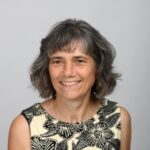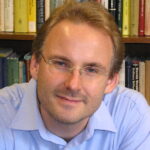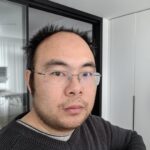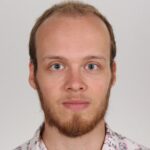Fall 2025 Term
The purpose of the AARMS Advanced Course program is to give graduate students and upper year undergraduates from AARMS Member Universities an opportunity to take courses not offered at their home institution free of charge. In Fall 2025, the courses listed below will be offered in an exclusively online format.
Students may be able to claim credit for AARMS Advanced Courses from their home institution using mechanisms similar to the AARMS Summer School. Students hoping to receive academic credit for courses in this program are strongly encouraged to consult with their home institution about this process before the start of lectures.
Both students and instructors should consult the frequently asked questions. Please send any addition questions about this program to Andrew Irwin.
Important dates
- August 20, 2025: Application opens for AARMS Advanced courses (applications will be accepted on a rolling basis)
- September 20, 2025: Last deadline for students to join the class;
Registration
To register for an AARMS Advanced Course in Fall 2025 please contact the instructor directly. Send a statement of interest to the instructor listed below indicating why you wish to take the class and listing previous courses relevant to the topic.
- Dr. Jeannette Janssen: jeannette.c.m.janssen@gmail.com
- Dr. Yorck Sommerhäuser: sommerh@mun.ca
- Dr. Nanwei Wang: nanwei.wang@unb.ca
- Dr. Luuk Stehouwer: luuk.stehouwer@gmail.com
Discrete Random Structures
 Dr. Jeannette Janssen, Dalhousie University
Dr. Jeannette Janssen, Dalhousie University
This course will cover basics of probability and stochastic processes, and then focus on areas where probability and combinatorics interact. Topics include: probabilistic method, stochastic graph models for complex networks, probabilistic algorithms. Probabilistic techniques include: expectation and concentration of random variables, stochastic processes, conditional expectation, Markov chains, martingales, branching processes. All of these concepts will be applied to random graphs and other discrete structures.
Representation Theory
 Dr. Yorck Sommerhäuser (Memorial University)
Dr. Yorck Sommerhäuser (Memorial University)
A representation is the concrete realization of an abstract algebraic object by linear transformations of some vector space. If this vector space is finite-dimensional, these linear transformations can be expressed as matrices.
Representations can be studied for many algebraic objects, such as groups, both finite and infinite, associative algebras, Lie algebras, and many others. In this course, we will concentrate on finite-dimensional representations of finite groups, with special emphasis on the symmetric group. We will begin with developing the theory of group characters, where we in particular prove their orthogonality relations and explain the notion of a character table. We will then illustrate these concepts in the case of the symmetric group, whose representations will be constructed with the help of Young tableaux. We will then compute the characters of the symmetric group with the help of various character formulas, such as the Frobenius character formula.
The textbook for the course is “The Symmetric Group” by B. Sagan, published by Springer-Verlag in the Graduate Texts in Mathematics series. Prerequisites for the course are a basic knowledge of group theory and a good understanding of linear algebra. Concepts from multilinear algebra, such as tensor products and symmetric powers, will be needed only occasionally.
Elementary Experimental Design
 Dr. Nanwei Wang (University of New Brunswick, Fredericton)
Dr. Nanwei Wang (University of New Brunswick, Fredericton)
This course is an introduction to the design of experiments and their analysis. The emphasis will be on practical methods for setting up experiments whose results make the best use of resources and which will be analyzable using standard statistical tools. Linear models, ANOVA tests, and other classical statistical methods will be covered. These methods are fundamental to constructing facts in all physical sciences, health sciences, social sciences, and all branches of engineering.
Operator Algebras
 Dr. Luuk Stehouwer (Dalhousie University)
Dr. Luuk Stehouwer (Dalhousie University)
Many familiar mathematical objects come equipped with algebraic as well as topological structure. For example, there is a space of matrices: one can define the ‘distance’ between two matrices using the operator norm. In this course we will explore the wonderful algebraic and functional analytic properties of such algebras of operators.
The first half of the course will be an introduction to C*-algebras. After constructing the functional calculus, we discuss how to recover the norm of an element from its spectrum. Our main goal will be to prove the Gelfand representation theorem saying that every commutative C*-algebra is the algebra of functions on a compact Hausdorff space. As time permits, we will discuss the Gelfand-Naimark-Segal construction and the Gelfand-Naimark theorem.
In the second part of the course we will specialize to von Neumann algebras. We will show that elements of von Neumann algebras have a polar decomposition. Commutative von Neumann algebras are given by functions on a measure space. In the other extreme, von Neumann algebras with trivial centers are called factors, which are classified into several types. We will see that general von Neumann algebras are essentially a combination of these two types. We will construct the predual of a von Neumann algebra and study normal functionals. An essential ingredient in this theory is the behavior of projectors in a von Neumann algebra. As time permits, we will study subfactors, Lp-spaces, bimodules and Connes fusion.
